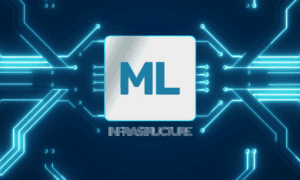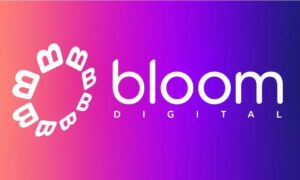Introduction
The financial industry is undergoing a significant transformation, with technological advancements playing a key role in reshaping traditional processes. One of the most disruptive innovations in recent years has been blockchain technology. Originally introduced as the foundation of cryptocurrencies, blockchain is now revolutionizing various industries, including asset finance software solutions.
Asset finance involves lending or leasing assets like equipment, machinery, vehicles, and real estate to businesses and individuals. Managing these financial transactions requires sophisticated software solutions that ensure efficiency, accuracy, and security. Blockchain is emerging as a game-changer in this sector by offering decentralized, transparent, and immutable record-keeping capabilities. This article explores the role of blockchain in asset finance software, its benefits, real-world applications, and future potential.
Understanding Blockchain in Asset Finance Software Solutions
Blockchain is a distributed ledger technology (DLT) that records transactions in a secure and transparent manner. Unlike traditional databases, which are centralized and controlled by a single entity, blockchain operates on a decentralized network, making it highly resistant to fraud and tampering.
In the context of asset finance software solutions, blockchain can:
- Enhance transaction security and prevent fraud
- Streamline loan origination and asset leasing
- Automate contract execution using smart contracts
- Improve asset tracking and ownership verification
- Facilitate regulatory compliance and auditability
Benefits of Blockchain in Asset Finance Software Solutions
1. Enhanced Security and Fraud Prevention
One of the biggest concerns in asset finance is the risk of fraud and data manipulation. Traditional systems rely on intermediaries, which increases the chances of unauthorized modifications or cyberattacks. Blockchain eliminates this risk by providing a tamper-proof ledger, where every transaction is verified and encrypted using cryptographic techniques. Once recorded, data cannot be altered without consensus from the network, ensuring security and authenticity.
2. Transparency and Trust
Blockchain enables real-time visibility of transactions, reducing the chances of disputes and discrepancies. In asset finance, where multiple stakeholders—lenders, borrowers, regulators, and auditors—are involved, transparency is crucial. By using blockchain, all parties can access a shared and immutable record of transactions, fostering trust and improving decision-making.
3. Smart Contracts for Automation
Smart contracts are self-executing contracts with predefined conditions written into code. These contracts automatically trigger transactions when specified conditions are met. In asset finance software solutions, smart contracts can automate:
- Loan approvals and disbursements
- Lease agreement execution
- Payment settlements
- Collateral management
This reduces paperwork, eliminates intermediaries, and speeds up financial processes, making asset finance more efficient.
4. Improved Asset Tracking and Ownership Verification
Managing assets in finance requires accurate tracking of ownership, maintenance history, and lease agreements. Blockchain provides a decentralized database where all asset-related data is securely recorded and easily verifiable. This is particularly beneficial for industries like automotive leasing, equipment financing, and real estate, where tracking asset history is essential.
5. Faster Cross-Border Transactions
Asset finance often involves international transactions, which can be time-consuming due to multiple verification processes and regulatory hurdles. Blockchain simplifies cross-border asset financing by eliminating intermediaries, reducing transaction times, and ensuring real-time settlement. This is especially useful for global companies financing assets across multiple jurisdictions.
6. Regulatory Compliance and Auditability
Regulatory compliance is a major challenge in asset finance, as financial institutions must adhere to strict reporting and auditing requirements. Blockchain provides an immutable and transparent audit trail, making it easier for regulators to verify compliance. By using blockchain-based asset finance software solutions, businesses can automate compliance checks and reduce the risk of penalties.
Real-World Applications of Blockchain in Asset Finance
1. Equipment Leasing and Financing
Blockchain is transforming the way businesses lease and finance equipment. Companies can use blockchain-based platforms to track asset ownership, automate lease payments using smart contracts, and ensure transparency between lenders and borrowers.
2. Automotive Financing
Vehicle leasing and financing involve multiple transactions between manufacturers, dealerships, banks, and customers. Blockchain enables seamless tracking of vehicle history, financing agreements, and ownership transfers, reducing fraud and improving efficiency.
3. Real Estate Asset Financing
Real estate asset financing requires secure and transparent documentation of property ownership, mortgage agreements, and lease contracts. Blockchain ensures that all records are immutable and accessible to relevant parties, streamlining property financing processes.
4. Supply Chain Asset Financing
Businesses involved in supply chain financing can use blockchain to verify asset ownership, track shipments, and automate financing agreements. This ensures faster payments and reduces disputes between suppliers and financiers.
5. Decentralized Finance (DeFi) in Asset Financing
Decentralized finance (DeFi) is a blockchain-based financial system that eliminates traditional intermediaries. DeFi platforms enable peer-to-peer asset financing, allowing businesses to access funds directly from investors without relying on banks. This increases financial inclusion and reduces borrowing costs.
Challenges of Implementing Blockchain in Asset Finance Software Solutions
Despite its advantages, blockchain adoption in asset finance faces some challenges:
- Integration with existing systems: Many financial institutions still rely on legacy software, making integration with blockchain-based solutions complex.
- Regulatory uncertainty: The legal framework for blockchain-based asset finance is still evolving, leading to compliance concerns.
- Scalability issues: Blockchain networks may experience scalability limitations when processing a high volume of transactions.
- Initial implementation costs: Developing and deploying blockchain-based software solutions require significant investment and technical expertise.
The Future of Blockchain in Asset Finance
As blockchain technology matures, its adoption in asset finance software solutions is expected to grow. The future may see:
- Widespread adoption of tokenized assets: Businesses may use blockchain to tokenize physical assets, enabling fractional ownership and seamless transfers.
- Interoperability with traditional banking systems: Financial institutions may integrate blockchain with existing banking infrastructure to improve efficiency.
- Regulatory clarity: Governments and financial regulators may establish clearer guidelines to support blockchain adoption in asset finance.
- Artificial Intelligence (AI) and Blockchain Synergy: AI-driven analytics combined with blockchain can enhance risk assessment and decision-making in asset financing.
Conclusion
Blockchain technology is revolutionizing asset finance software solutions by offering enhanced security, transparency, automation, and efficiency. From smart contracts to improved asset tracking and cross-border transactions, blockchain is reshaping the way businesses finance and manage assets. While challenges remain, ongoing advancements and regulatory developments are likely to accelerate blockchain adoption in the asset finance industry.
As financial institutions and technology providers continue to innovate, blockchain-powered asset finance solutions will become an integral part of the digital financial ecosystem, driving greater efficiency and trust in financial transactions.



































